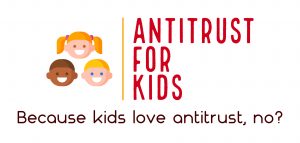Author: Steven Cernak
Recently, FTC Commissioner Bedoya made one of his first speeches and called for a “return to fairness” when enforcing the antitrust laws. In particular, he called for renewed enforcement of the Robinson-Patman Act. This speech is just the latest reason why businesses need to prepare for a new antitrust landscape. But Commissioner Bedoya and anyone else calling for drastic basic changes in antitrust enforcement need to be prepared to patiently work for such change with a skeptical judiciary.
In the speech, Bedoya argued that all the antitrust statutes were passed with the intention of improving the “fairness” of markets, not necessarily their “efficiency,” as the laws have come to be interpreted. Therefore, he wants the FTC to focus the interpretation of all the antitrust statutes on fairness, not efficiency, which he claims to be unambiguous: “People may not know what is efficient — but they know what’s fair.” Specifically, Bedoya called for a rejuvenated enforcement of the Robinson-Patman Act and its prohibitions on various types of discriminations, usually against smaller competitors.
On Bedoya’s Robinson-Patman point in particular, please allow me a short “I told you so.” In a prior post, I explained that Robinson-Patman was forgotten but not gone, still affecting negotiations and leading to a few private suits each year. I have insisted on teaching my Antitrust students about the basics of the law, warning them that it is still alive and was unlikely to ever be repealed. If the FTC were to begin actively enforcing the statute after a couple decades, all that knowledge will come in handy once again for many more lawyers.
More generally, it is not clear that interpretation of antitrust law would need to jettison “efficiency” or consumer welfare and move to “fairness” to reach a different result in some of the anecdotes covered in Bedoya’s speech. At least some of the matters might have come out differently with a longer-term view of competition and consumer welfare. In my view — a view that I know Comm. Bedoya does not share — such a standard would be less ambiguous than trying to figure out what “fairness” requires in any situation.
 The Antitrust Attorney Blog
The Antitrust Attorney Blog












